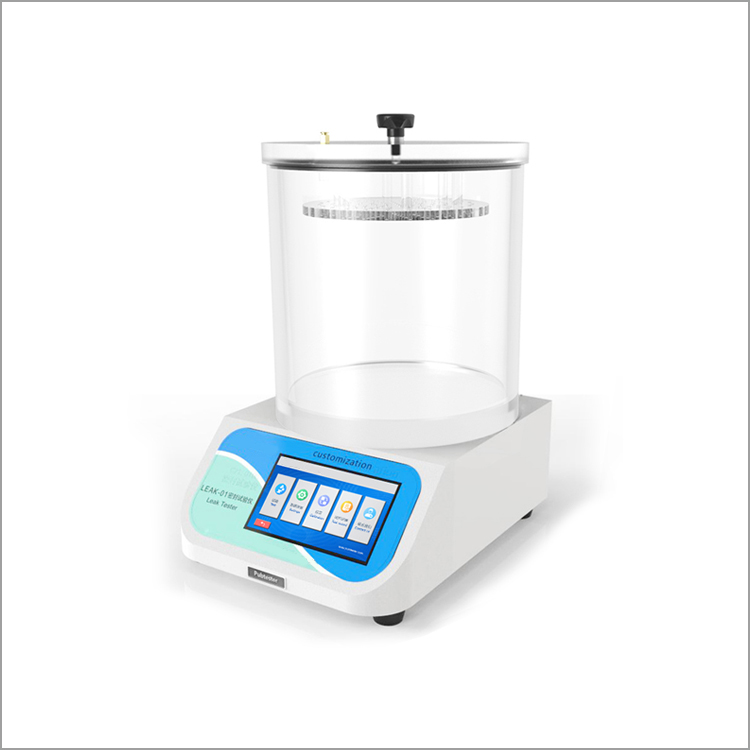¿Cuáles son los dos métodos más comunes de detección de fugas?
La forma de seleccionar rápidamente un instrumento adecuado de medición de la estanqueidad del aire se ha convertido en un problem a difícil para las empresas.De acuerdo con el principio de trabajo, la presión positiva y la presión negativa, el usuario puede elegir el instrumento adecuado.Jinan Horizon Tester introducirá el método de prueba.
1.Detección de fugas de vacío (método de presión negativa)
El método de presión negativa es bombear el vacío cuando el equipo está sellado para que la presión interna sea inferior a la presión atmosférica externa.Las aplicaciones específicas incluyen el método de atenuación al vacío (ensayo en seco) y el método de fuga lateral al vacío (ensayo de agua).
Método de atenuación por vacío: Under the condition of completely sealing all contact surfaces, directly or indirectly vacuumize the product, and analyze and read the pressure value air tightness detector to determine whether the product is qualified .
Leak - 01 leak Checker
Método de fuga lateral al vacío:differential pressure leak test method and bubble leak test method, the product to be tested is put into the leak test box, and the vacuum is drawn on the box body to cause a pressure difference between the inside and outside of the test product. At this time, the following phenomena will occur:
Para envases y frascos flexibles:
Si la bolsa se infla y permanece intacta, el embalaje estará intacto;
La Bolsa de embalaje no se hincha ni se encoge, lo que indica que el embalaje tiene fugas;
El embalaje sigue produciendo burbujas de aire que indican fugas.
Embalaje duro (por ejemplo, botella)
Derrame de líquido en el embalaje, indicando fugas en el embalaje;
El embalaje sigue produciendo burbujas de aire que indican fugas.
2.Detección de presión positiva
El método de presión positiva es sellar e inflar el equipo de ensayo para que su presión interna sea superior a la presión atmosférica externa.Presión.El método puede serUso: caída de presiónMétodos juicio, detección de inmersión y detección de puntos fijos.
Determinación de la caída de presión:In the case of completely sealing all contact surfaces, inflate the product,observe the pressure change through the air tightness tester to determine the magnitude of the leakage, and then infer the leakage of the equipment, but not the leakage point make clear positioning.
Probador de fugas y resistencia al sellado LSST - 01
Detección de inmersión (bubble method detection): Inflate a certain clean gas into the equipment, when the pressure reaches the set value, immerse it in water, and judge the location and size of the leak by observing the air bubbles. t is suitable for immersing in the interior Product detection in the water can accurately determine the location of the leak.
Método de medición de la presión diferencial:The compressed air (positive pressure) is accurately input product and the standard product at the same time, the inflation circuit is cut off, and the air tightness into the tested detector is used to calculate, compare and analyze to obtain the tested product The pressure difference ΔP between the product and the standard product is used to determine whether the product is qualified.

